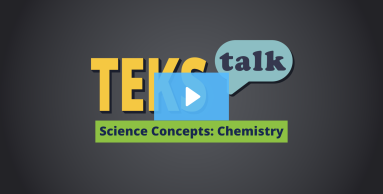- Science
- Grade 9
- Scientific and engineering practices
CHEM.3.A

Knowledge and Skills Statement
The further explanation is designed to be a resource for educators that helps them better understand the topic their students are learning. Further explanations may be written at a more complex level than would be expected for students at the grade level.
Explanations and solutions:
Engineering design is a systematic process for solving engineering problems. It starts with scientific knowledge and models of the material world. Each proposed solution balances competing criteria—desired functions, technological feasibility, cost, safety, esthetics, and compliance with legal requirements.
Models:
Both scientists and engineers use models. Physical models show how things look or work in the real world. Conceptual models represent relationships and describe how things work or fit together. Mathematical models use mathematical equations, theories, formulas, and proofs. Simulations allow for the control of variables and mimic real-world processes. Examples of models include sketches, diagrams, mathematical relationships, simulations, physical models, and prototypes, and they are used to make predictions about the behavior of a system.
Research
Springer Nature Portfolio. "Engineering Solutions for a Better World." Communications Engineering 1, no. 7 (2022). https://doi.org/10.1038/s44172-022-00007-6
Summary: Communications Engineering is a journal from the Nature Portfolio dedicated to publishing research across all engineering fields. This journal highlights scenarios which use scientific principles to investigate problems and develop solutions. The journal's first release includes papers on sustainable transport and upcycling vehicle waste, keeping it out of landfills.
